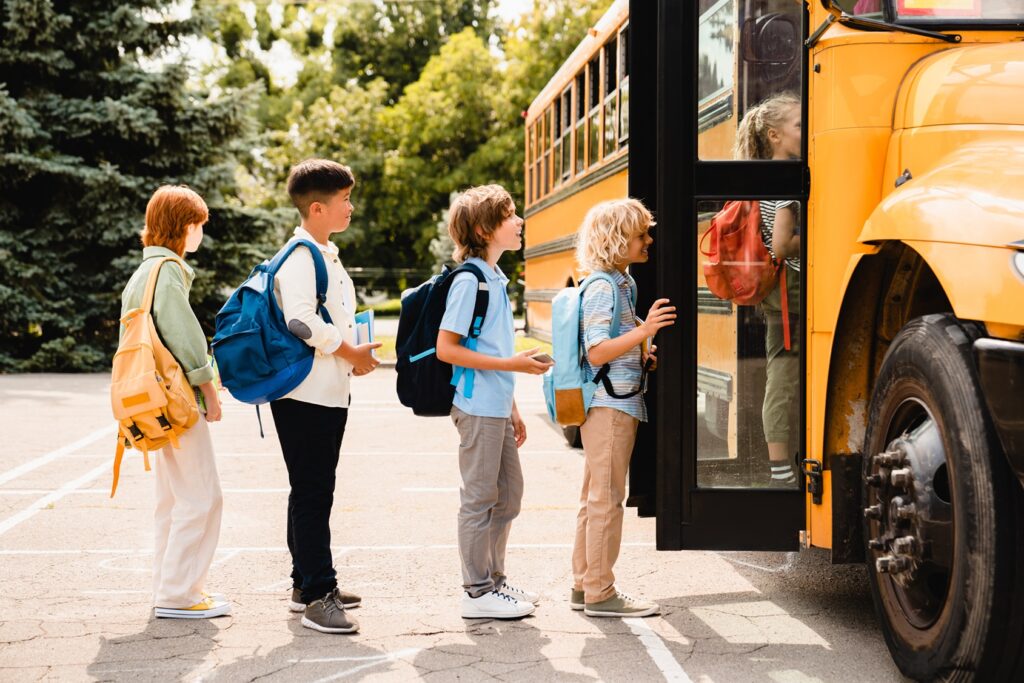Helping Kids with Executive Functioning as the New School Year Starts

As the carefree days of summer draw to a close, children and parents alike are gearing up for the return to school. This time of year can be incredibly exciting, full of possibilities and new beginnings. However, for kids with executive functioning challenges, the transition can also be a bit daunting. And it’s not just hard on the kids, it’s hard on parents as well.
Whether you’re a family with one or more kids with ADHD, or you have it yourself, managing the transition from one set of routines to another takes patience. It’s wise to expect that this time of year can be a little messy. If you adopt an attitude of “doing your best” you will weather the transition with more grace and less stress.
Below are the ways I have approached school transitions with my family and my clients. Because kids have different skill sets, the suggestions are broken down based on age, but if you feel your child is not yet ready for the more advanced skills, just drop back and try on the ones recommended for younger kids.
The truth is that all of it helps. This list is one you can bookmark and come back to time and again as your routines change. It’s also helpful for “mini transitions” like holiday breaks or vacations.
Understanding Executive Functioning
Let’s start on the same page by defining executive functioning. Executive functioning refers to the set of mental skills that help us manage time, pay attention, switch focus, organize, plan and remember details. Think of it as the brain’s command center. While some kids naturally excel at these skills, others may need a little extra help, especially during transitions like going back to school.
How Changes in Routine Affect Kids with Executive Function Challenges
Routine changes can disrupt the balance for kids with executive functioning challenges. The shift from unstructured summer days to the regimented schedule of school can spark anxiety, affect concentration, and lead to difficulties with organization and time management.
Most kids with ADHD thrive with a plan. They love knowing what to expect, what’s coming and what is expected of them. That means consistency and predictability are highly valued even if your kid is someone who loves to try new things. Abrupt change can throw kids with ADHD off balance, even when the change is something they knew was coming.
Making the Transition Back to School Easier for Kids
As a parent, you want to have a few aces up your sleeve to help make the transition back to school easier for your child. As kids age and independence increases, some kids need help with a little less micromanaging but they still crave support nonetheless. Finding ways to support while also showing that you value their input, independence and ability to take care of themselves is important.
And as I mentioned above, the suggestions below are listed by age, but apply to everyone. If you notice that your high school student needs help with a routine, offer it. Sometimes kids who are the most affected by changes to their routine need all of the suggestions listed below.
Just remember to try and deliver your suggestions in a way that your kid will interpret as supportive. Your goal is to empower your child to learn these skills so as they get older, they can anticipate changes in routine and execute these strategies themselves.
Elementary School (Ages 5 – 10)
At this age, structure and routine are crucial. Parents and teachers can help by:
- Establish a Back-to-School Routine: Gradually shift bedtime and wake-up times a couple of weeks before school starts so your child gets used to the earlier hours and rigidity of a schedule once again.
- Create a Visual Schedule: Calendars and visual planners are great for kids with executive functioning challenges because they see what’s on the agenda in addition to hearing you tell them what’s coming.
- Practice Your Morning Routines: Conduct trial runs of morning routines to eliminate surprises when school starts. This helps remove the unexpected obstacles in your routine that can cause morning to be more challenging than desired.
Middle School (Ages 11 – 13)
Middle school introduces more complexity and a higher level of responsibility to kids. To help ease your middle schooler back into school add these elements to your life:
- Get Organized Early: As kids get older, there seems to be more technology in the form of phones and computers in their lives. This allows them to add digital calendars and planners to their routine which are often more convenient than a calendar hanging on the wall. Digital organizing tools are with kids all the time so they can help manage homework and project deadlines effectively as well as help kids keep up with sports, activities and other social events they want to participate in.
- Set Goals: Encourage your child to begin to set small, achievable goals for the fall. Planning ahead like this helps them look forward to what’s coming with anticipation vs dread. It also builds confidence and helps them track progress.
- Encourage Independence: Encourage your middle schooler to help with school shopping and planning. Ideas here are to allow your child to choose the look/feel of their school supplies, let them take charge of packing their bags and organizing their materials.
High School (Ages 14 – 18)
As high school is one important precursor to adulthood, this is a time for students to polish their executive functions further:
- Encourage Independent Time Management Skills: With age comes pressure and for many kids high school is a whole new level of stress. Along with setting goals and digital calendars, consider introducing techniques like the Pomodoro Technique to manage study time effectively.
- Prioritization: One fun thing about high school is the vast options kids have for how to spend their time. But, sometimes this can be overwhelming as kids vacillate between what they want to spend time doing and what they need to spend time doing. Help them prioritize tasks by urgency and importance using tools like the Eisenhower Box.
- Self-Monitoring: As kids get closer to adulthood, learning to know their own experience of what works and doesn’t work is important. As a parent, it’s wise to introduce “self reflection” as a technique to evaluate what is going on inside so kids get an earlier read on their emotions, stress level, anxiety and more. Encourage regular reflection on what strategies work best for them and make adjustments as needed.
- Stress Management Techniques: As the pressure builds throughout high school, many kids feel anxious about the future. This is a great time to help your child notice how the change in routine is affecting their mood and stress level. Introduce practices such as journaling and meditation to help manage stress.
These strategies can set the stage for a successful school year for your kids no matter what their age. And, they can help you with a place to start so the impending school year, summer break or holiday doesn’t derail all of the good work you’ve been doing to help your kid build their executive functioning skills.
By taking proactive steps, both you and your child will have a better start to the year and a stronger foundation as we move out of the newness and into the routine of the school year.



